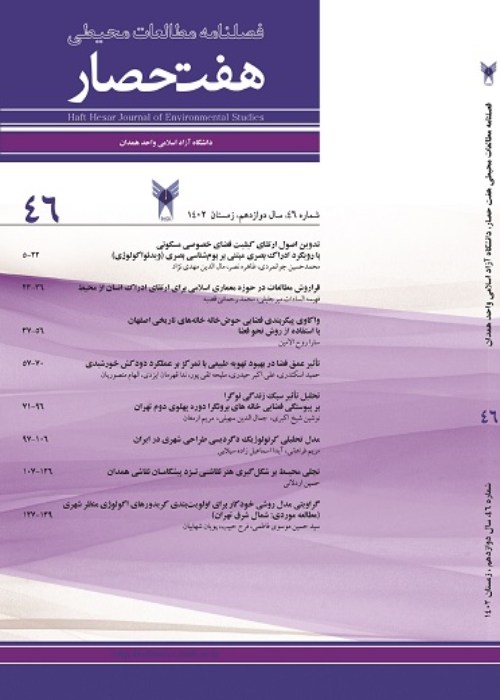Identifying and Analyzing Coordination Barriers in the Context of Urban Infrastructure Provision in IranA Qualitative Multiple Case Study
Urban infrastructure systems provide foundations for modern civil communities and enhance the quality of life. Coordination between different urban infrastructure agencies involved in urban infrastructure provision plays a significant role in the success of these critical urban sub-systems. It brings together various independent agencies to make their endeavors more accordant. In turn, identifying and analyzing coordination barriers is vital in establishing strong coordination in providing urban infrastructure. For this reason, this paper aims to uncover barriers to achieving coordination between independent agencies involved in urban infrastructure provision in Iran.
A qualitative multiple embedded case study covering the processes of urban infrastructure provision for four new development areas, including urban infrastructure provision for Omid-e Ekbatan Mehr housing project in Hamedan city, urban infrastructure provision for Phase 7 Mehr housing Project in Hashtgerd New City, urban infrastructure provision for Hesar-e Haj Shams Ali Mehr housing project in Hamedan city and urban infrastructure provision for Tape Emam Gol Mehr housing project in Hamedan city was conducted. The unit of analysis was the provisioning process of each kind of urban infrastructure, among other things, water supply system, electric power grid, sanitation sewage system, piped gas network, transportation system network, and telecommunication network. Three primary data sources in qualitative research, interviews, observations, and documents, were employed. In order to deal with validity and reliability issues several strategies have been applied. First, to improve internal validity, two strategies were applied: "triangulation" and "member checking". Second, in order to enhance external validity, "maximum variation strategy" was utilized. Third, "use of multiple sources of data" and "reviewing the initial findings by key informants" were applied to increase construct validity. Finally, to enhance reliability, "triangulation strategy" was applied. However, the data analysis process moves from highly inductive at the beginning of the process to insignificancy deductive at the end of the process.
The research findings indicated that there are seven types of coordination barriers in the context of the urban infrastructure provision in Iran, namely, differences in governance and management structures; lack of information sharing; frequent changes in organizational positions; political pressure; lack of horizontal relations and central-local relationships; lack of precise coordination mechanism; and destructive competition. These barriers can be classified into two major categories: organizational and non-organizational coordination barriers.
- حق عضویت دریافتی صرف حمایت از نشریات عضو و نگهداری، تکمیل و توسعه مگیران میشود.
- پرداخت حق اشتراک و دانلود مقالات اجازه بازنشر آن در سایر رسانههای چاپی و دیجیتال را به کاربر نمیدهد.


